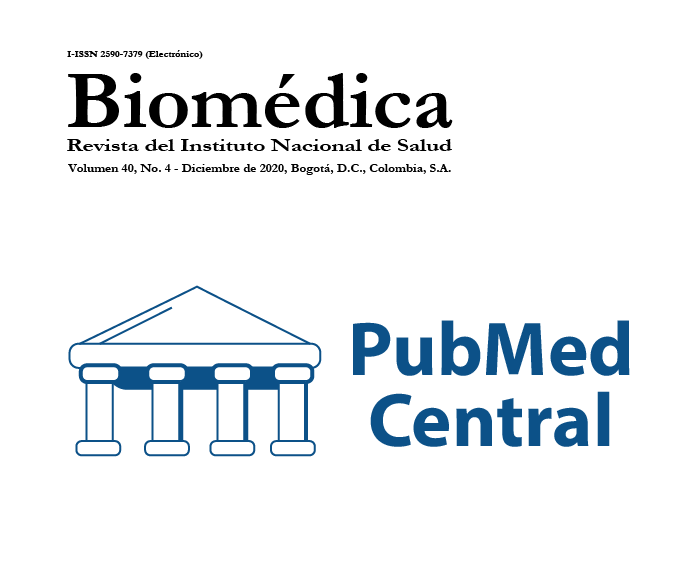Twins from different fathers: A heteropaternal superfecundation case report in Colombia
Abstract
Heteropaternal superfecundation is an extremely rare phenomenon that occurs when a second ova released during the same menstrual cycle is additionally fertilized by the sperm cells of a different man in separate sexual intercourse.
In August, 2018, the Grupo de Genética de Poblaciones e Identificación at Universidad Nacional de Colombia received a request to establish the paternity of a pair of male twins with genetic markers. The following analyses were performed: amelogenin gene, autosomal short tandem repeat (STR), and Y-STR analyses by means of human identification commercial kits, paternity index, and the probability of paternity calculation and interpretation. A paternity index of 2.5134E+7 and a probability of paternity of 99.9999% for twin 2 were obtained while 14 out of 17 Y-chromosome markers and 14 out of 21 autosomal short tandem repeats were excluded for twin 1. The results indicated that the twins have different biological fathers.
Although heteropaternal superfecundation is rarely observed among humans given its low frequency, in paternity disputes for dizygotic twins it is mandatory to demand the presence of the two twins in the testing to avoid wrong conclusions.
Downloads
References
Jonczyk P. Superfecundation - From ancient to modern times. Ginecol Obstet Med Proj. 2015;38:32-8.
García MG, Bolontrade JA, Penacino GA, Chiesa IJ, Pérez SM. Heteropaternal superfecundation: Implicancies in forensic genetics. Forensic Sci Int Genet Suppl Ser. 2015;5:633-5. https://doi.org/10.1371/journal.pone.0037166
James W. The Incidence of superfecundation and of double paternity in the general population. Acta Genet Med Gemellol (Roma). 1993;42:257-62. https://doi.org/10.1017/s0001566000003263
Sun M, Zhang XN, Wu D, Liu QB, Wu YM. A case study of heteropaternal superfecundation in a pair of Chinese twins. Aust J Forensic Sci. 2018;50:341-4. https://doi.org/10.1080/00450618.2016.1236291
Wenk R, Houtz T, Brooks M, Chiafari FA. How frequent is heteropaternal superfecundation? Acta Genet Med Gemellol (Roma). 1992;41:43-7. https://doi.org/10.1017/s000156600000249x
Blickstein I, Keith LG. Prenatal assessment of multiple pregnancy. 2nd edition. Boca Raton, FL: Taylor & Francis Group; 2007. p. 234.
Archer J. Facts illustrating a disease peculiar to the female children of Negro slaves. Med Repos. 1810;1:319-23.
Terasaki PI, Gjertson D, Bernoco D, Perdue S, Mickey MR, Bond J. Twins with two different fathers identified by HLA. N Engl J Med. 1978;241:590-2. https://doi.org/10.1056/NEJM199401273300403
Girela E, Rodrigo MD, Lorente JA, Lorente M, Álvarez JC, Villanueva E. Indisputable double paternity in dizygous twins. Fertil Steril. 1997;67:1159-61. https://doi.org/10.1016/S0015-0282(97)81456-2
Hansen HE, Simonsen BT. A case of heteropaternal superfecundation in a pair of Danish twins. Forensic Sci Int Genet Suppl Ser. 2008;1:514-5. https://doi.org/10.1016/j.fsigss.2007.10.162
Sanou I, Núñez G, Rodríguez A, Espinoza M, González L. Gemelos con diferentes padres: primer caso descrito en Costa Rica. Revista Latinoamericana Derecho Médico y Medicina Legal. 2004;8:85-8.
Bulbul O, Filoglu G, Altuncul H. Heteropaternal superfecundation: A case report in Turkey. J Assisted Reprod Genet. 2013;1:1-2. https://doi.org/10.4172/jfiv.1000112
Verma RS, Luke S, Dhawan P. Twins with different fathers. Lancet. 1992;339:63-4. https://doi.org/10.1016/0140-6736(92)90193-7
Feng C, Wang D. Paternity identification of geminus with different fathers. J Mudanjiang Med Coll. 2012;3:77-8.
Phelan M, Pellock J, Nance W. Discordant expression of fetal hydantoin syndrome in heteropaternal dizygotic twins. N Engl J Med. 1982;307:99-101. https://doi.org/10.1056/NEJM198207083070206
Spielmann W, Kuhnl P. The efficacy of modern blood group genetics with regard to a case of probable superfecundation. Haematologia (Budap). 1980;13:75-85.
Geada H, Ribeiro T, Brito R, Espinheira R, Rolf B, Hohoff C, et al. A STR mutation in a heteropaternal twin case. Forensic Sci Int. 2001;123:239-42. https://doi.org/10.1016/s0379-0738(01)00494-7
Ambach E, Parson W, Brezinka C. Superfecundation and dual paternity in a twin pregnancy ending with placental abruption. J Forensic Sci. 2000;45:181-3.
Lu H, Wang C, Wu F, Li J. Paternity identification in twins with different fathers. J Forensic Sci. 1994;39:1100-2.
Wang C, Lu H. Identification of geminus with different fathers. Chinese Journal of Blood Transfusion. 1994;3:137-8.
Peng C, Jiang M. On the temporary couples in the flowing China. J Hefei Univ Technol Social Sci. 2014;31:100-6.
Mahmood HK, Omar AJ, Salih KM. Paternity cases within a medicolegal context: A case study of heteropaternal superfecundation in Iraq. Arab J Forensic Sci Forensic. 2017;1:715-21. https://doi.org/10.26735/16586794.2017.012
Majsky A, Kout M. Another case of occurrence of two different fathers of twins by HLA typing. Tissue Antigens. 1982;20:305. https://doi.org/10.1111/j.1399-0039.1982.tb00362.x
Bravo-Aguilar MLJ. Investigación de la paternidad de gemelos: superfecundación heteropaternal. En: La verdad genética de la paternidad. Medellín: Editorial Universidad de Antioquia; 2009. p. 58-9.
Some similar items:
- Valeria Velásquez-Zapata, Katherine Palacio-Rúa, Luz E. Cano, Adelaida Gaviria-Rivera, Assessment of genotyping markers in the molecular characterization of a population of clinical isolates of Fusarium in Colombia , Biomedica: Vol. 42 No. 1 (2022)

| Article metrics | |
|---|---|
| Abstract views | |
| Galley vies | |
| PDF Views | |
| HTML views | |
| Other views | |

























